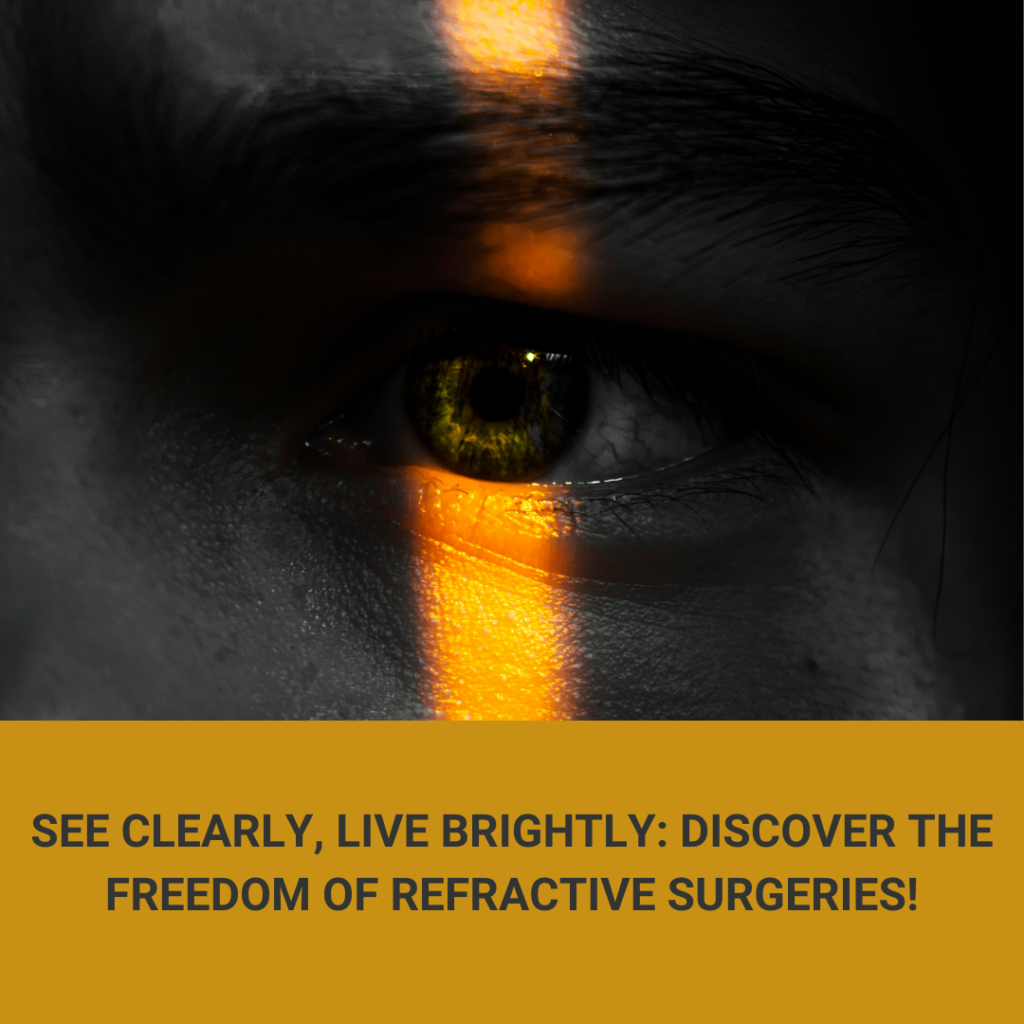Lasic laser eye surgery has changed how we fix vision problems. This procedure is especially popular for resolving both nearsightedness and farsightedness issues permanently. Before choosing this life-changing option, it's critical to grasp all its details. Here's why many view LASIK with hope.
Over decades, LASIK has become a top choice among eye surgeries worldwide. Its rise is due to its strong lasic laser success rates and high patient approval. Many understand LASIK eye surgery's perks, yet deciding wisely is vital too. It's more than ditching contacts or glasses; it's thinking about its suitability for you personally. People need expert advice, weigh possible side effects, and check if they're fit to enhance the procedure's success.
Understanding LASIK: The Basics
LASIK, or Laser-Assisted In Situ Keratomileusis, is for fixing eyesight issues. It works by changing the shape of the cornea in your eye. The cornea needs reshaping to make sure light focuses on the retina right.

Surgeons use special lasers to reshape the cornea precisely during LASIK. When the shape is adjusted, it fixes refractive errors like nearsightedness easily. Precise laser adjustments help the light hit the retina in exactly the right way.
Many people choose LASIK for its benefits like improved vision and speedy recovery. The technology involved makes it very accurate and quick to perform. Most patients see well without glasses soon after their recovery time.
Eligibility for LASIK Surgery
Not everyone is a match for lasic laser eye surgery. People who are good fits are often in their late teens and beyond. It's important that your vision doesn't change for at least two years. Candidates also need to avoid certain health issues that slow down healing.
Some conditions can make LASIK be not right to pursue. If your corneas are thin or not shaped right, that's a sign against it. Conditions like keratoconus or dry eyes also mean no LASIK. Pregnant or nursing people should wait due to changing hormones.
Seeing an eye doctor before LASIK is very important. This doctor visit makes sure you're ready, and you get to ask things on your mind. They’ll share what happens next in detail and get you set up safely.
Step-by-Step: The LASIK Procedure
The LASIK procedure is a journey through three key stages. First, you have a detailed eye exam to see if you can get LASIK. On the surgery day, they put special drops in your eyes to make you comfortable.
When it's time for the surgery, they use a laser to carefully cut a small flap in your cornea. This flap is gently lifted so that the laser can reshape the cornea right beneath it. This part is done quickly before the flap goes back in place. Afterwards, resting is crucial so your eyes start healing.
The technology behind LASIK has come a long way, making it both safe and exact. These lasers are set to fine details, crafted to make the reshaping smooth and without worry. The ability of this tech to adjust how it works for each eye makes LASIK safe and successful every time.
Experiencing LASIK: Pre and Post Surgery
Patients often feel nervous before LASIK eye surgery. It's wise to have arranged transport since immediate post-surgery sight can be unclear. The actual operation is brief, taking about 15 minutes per eye, with minimal discomfort due to local anesthesia ensuring it feels painless.
After the procedure, one might feel slight discomfort or have watery eyes. These feelings are temporary and usually diminish after a few hours. To ensure smooth recovery, it's important not to rub the eyes, wear goggles if advised, and stick strictly to any prescribed medications or eye drop schedule.
Most folks notice much better vision within a day of their surgery. Yet, the lasic laser recovery time can differ from person to person; complete stabilization typically happens within a few weeks. Following all aftercare instructions is critical for optimal healing and making the most of the surgery's benefits.
Navigating the Risks and Side Effects
Common side effects from LASIK like dry eyes and night light halos are usually not long-lasting. They might resolve within weeks after surgery if you follow your surgeon’s orders closely.
Complications don't happen often with LASIK, but they're possible. Sometimes, minor issues such as under-correction or flap problems may occur. These instances stress why choosing the right professional is crucial.
Selecting a skilled surgeon is key when opting for LASIK surgery. They provide accurate exams, ensure smooth surgery experiences, and top-notch follow-up care.
Maximizing the Benefits of Lasic Laser Surgery
Choosing lasic laser surgery could change your life completely forever. People enjoy freedom from constantly wearing annoying corrective lenses. You feel less restricted when swimming or engaging in sports. It's liberating not to worry about glasses or contacts every day.
A major plus of lasic laser surgery is better long-term vision. Seeing the world clearly without aids looks fantastic to many patients. Individuals with problems like nearsightedness or farsightedness often find great relief. Adjustments made to the cornea bring clearer vision satisfaction too.
Recovery Tips and Aftercare Essentials
The recovery phase after lasic laser surgery matters a lot for getting the best outcomes. Rest should be the main focus right after the surgery, with energy-zapping activities being avoided for at least one week.
- Give your eyes a break: No screens or heavy reading for 24 hours following surgery.
- Wear sunshades: When outside, wear sunglasses to shield your eyes from UV damage.
- Keep eyes dry: No swimming or getting water onto the eyes for up to two weeks.
After having lasic laser surgery, it's key to stick to the recommended medications and eye care routines. Patients need to:
- Apply the antibiotic and anti-inflammatory eye drops just as instructed by their doctor.
- Keep from rubbing or touching the eyes, this prevents any corneal flap issues.
- Go to all follow-up checkups to track healing and secure the best results.
Exploring Alternatives to Lasic Laser Surgery
Many people think of lasic laser when considering vision correction. However, there are other options which might be ideal for you. PRK (Photorefractive Keratectomy) is a method that reshapes the cornea without cutting a flap. If your corneas are thin, PRK could be a good fit.
SMILE (Small Incision Lenticule Extraction) is another option to explore. This procedure makes a small cut and is less invasive. It's designed for those who prefer a surgery with quicker recovery and fewer disruptions.
Om Netra Eye Care – Your Partner in LASIK Laser Surgery
At Om Netra Eye Care, we offer expert LASIK laser surgery, with the latest technology to help you achieve clear vision without the hassle of glasses or contact lenses. Our experienced team ensures a smooth, safe, and successful surgery for your long-term eye health.
Book your LASIK consultation today with Om Netra Eye Care, and take the first step toward a clearer, glasses-free future!

Your eye health and personal habits should guide your choice of surgery. Meet with an expert who will guide you based on your eye condition. Discuss what you expect with your doctor to see if it's lasic laser, PRK, or SMILE that serves you best.
Myths vs. Reality: The Truth About LASIK
Many people think lasic laser surgery is dangerous and ineffective, but it's very safe. Thanks to modern technology, lasik eye surgery in the USA is reliable and trustworthy.
Some folks fear the procedure will hurt, but only a little discomfort happens post-surgery. Patients often think lasic laser tech hasn't advanced, but that's completely false. It's essential for patients to learn about its improvements over time. Remember, knowing true facts about these advancements helps make better decisions.
Technological Advancements in Lasic Lasers
Recent improvements in lasic laser methods involve using high-tech tools. Advanced mapping technology tailors the process to each eye, making it more precise.
- Wavefront technology captures a detailed map, guiding fine and custom adjustments.
- Femtosecond lasers cut corneal tissue without blades, which makes the surgery safer.
These advancements are key to modern lasik eye surgery USA. Improvements help in achieving better results, making the experience better for patients, while minimizing risks. Highlighting these advancements shows the ongoing evolution in elective eye surgeries.
Success Stories: Transformations with LASIK
The experiences shared by individuals show the benefits of LASIK laser surgery. Many say they finally enjoy days without wearing glasses or contacts. These stories highlight how LASIK surgery can be life-changing and liberating.

LASIK eye surgery brings many people clearer vision and joyful experiences. The common theme found in these success stories is the relief from needing eyewear. Such narratives underscore how LASIK surgery enhances everyday living and autonomy.
Conclusion: Making an Informed Choice
Ultimately, exploring all options for lasic laser surgeries is crucial. Prospective patients should talk to eye specialists, as professional advice helps individuals make the best choice for vision improvement.
Understanding the details of lasic laser surgery is vital for anyone considering it. This knowledge helps create realistic expectations, paving the way for a successful experience and satisfaction. By deepening their understanding, patients can anticipate the outcomes and enhance their confidence in their decision.




